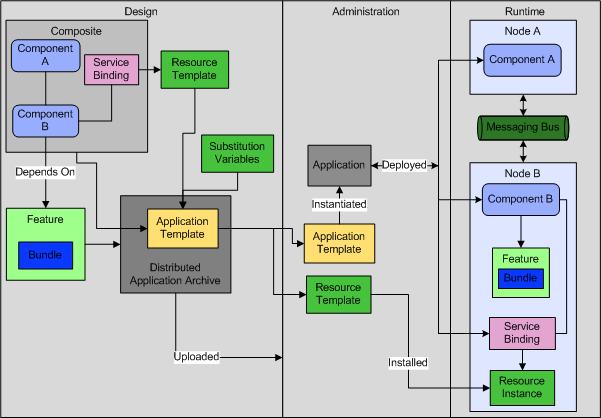Applications
TIBCO ActiveMatrix SOA applications assume different forms in different phases of the application life cycle. The cycle consists of a design phase, an administration phase, and a runtime phase.
In the design phase a TIBCO ActiveMatrix SOA application consists of one or more composites. Each application has a root composite. A composite contains components, services, references, and properties. The components, services, and references depend on custom features and resources. Services, references, and properties promoted to the root composite comprise the public interface of the application.
In the administration phase, you create an application by instantiating an application template. The product installer adds product application templates to Administrator. When you upload a DAA file to Administrator, Administrator extracts the application template and (optionally) the features and resource templates.
The following figure illustrates the application artifacts across the application life cycle.
- Configure the application by setting properties, logging configurations, and substitution variables
- Add bindings to services
- Promote services and references to the environment
- Wire services and references to services and references in other applications or environments
- Specify a distribution of the application to the runtime infrastructure
- Explicitly distribute application fragments-components and bindings-to one or more nodes
- Specify that an application should be distributed to the same nodes as another application
When you deploy the application, Administrator applies the distribution and the configuration. Features are automatically distributed with components, but resource instances required by the application must be manually installed into nodes before deployment. Life cycle operations on the application are translated into life cycle operations on the application fragments. You can also start and stop application fragments.

